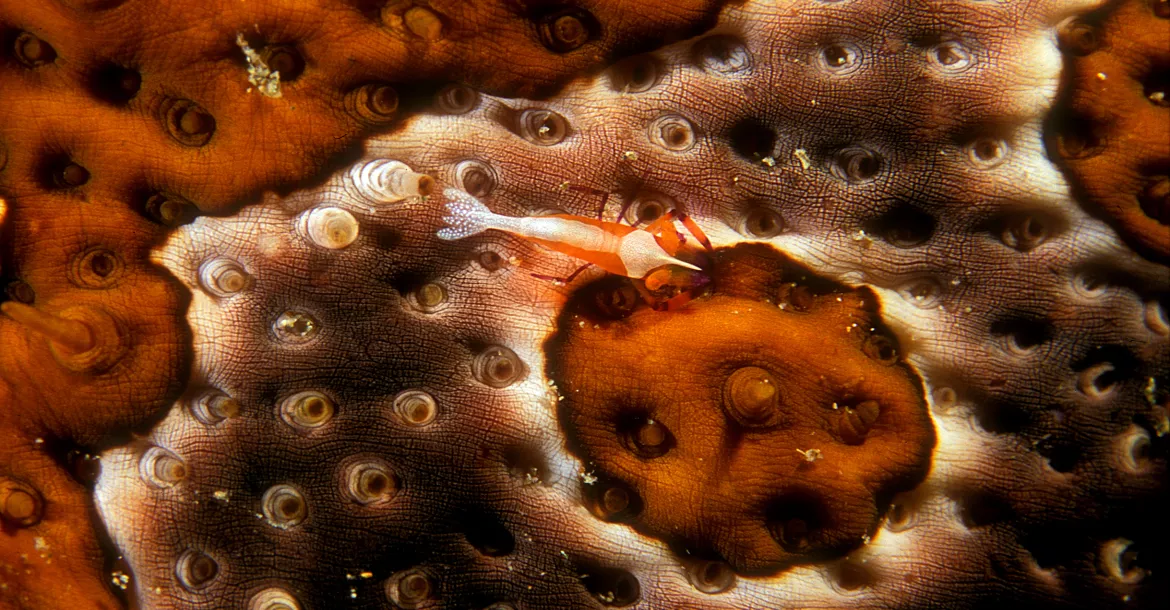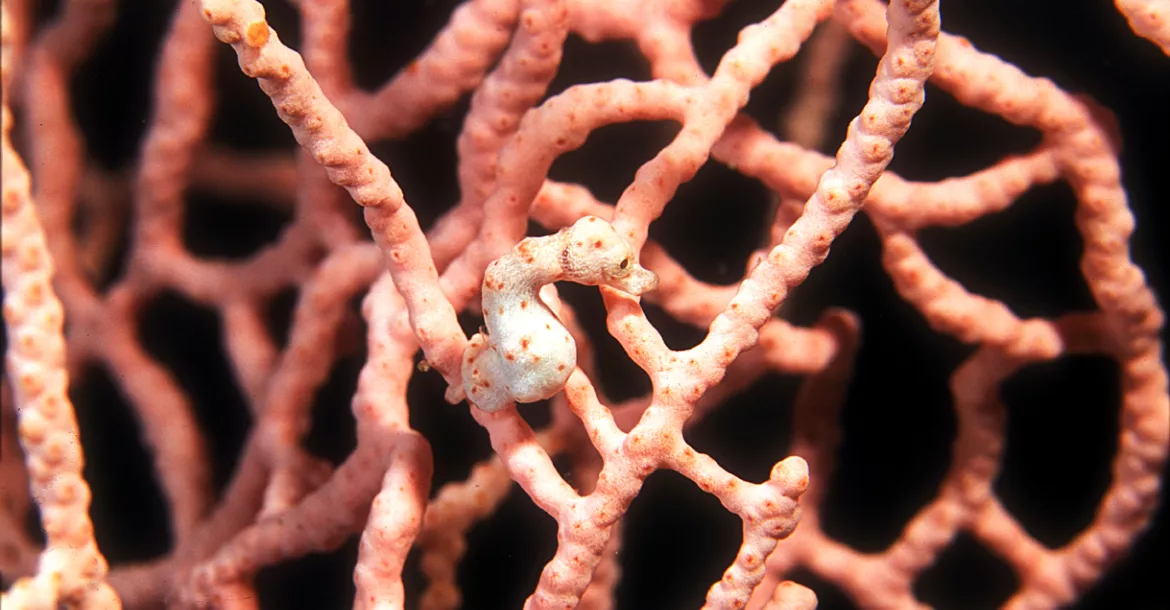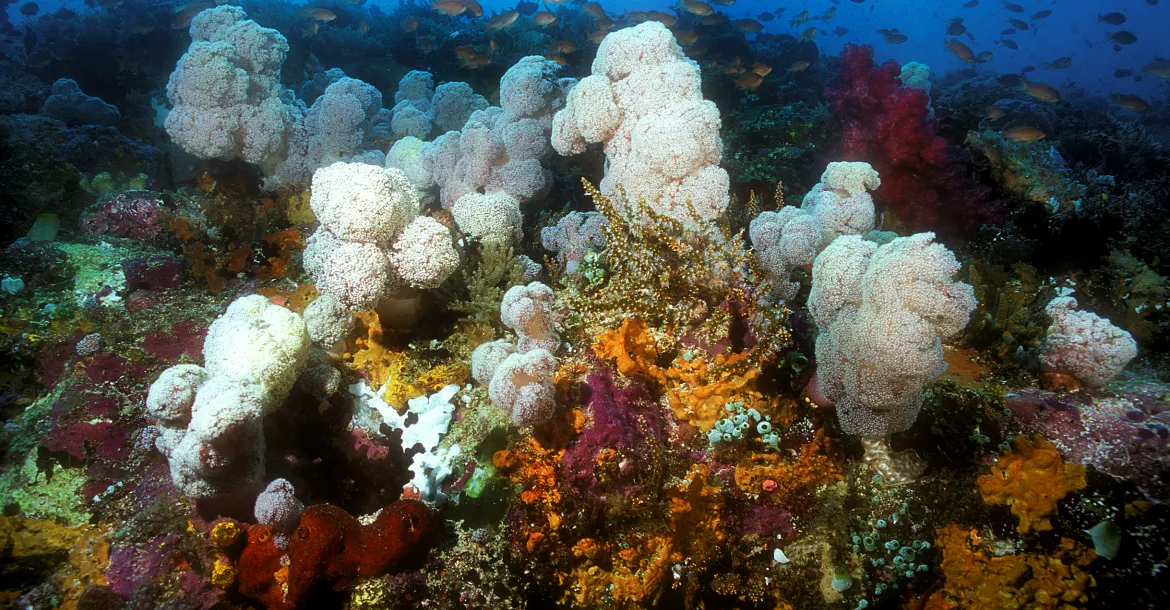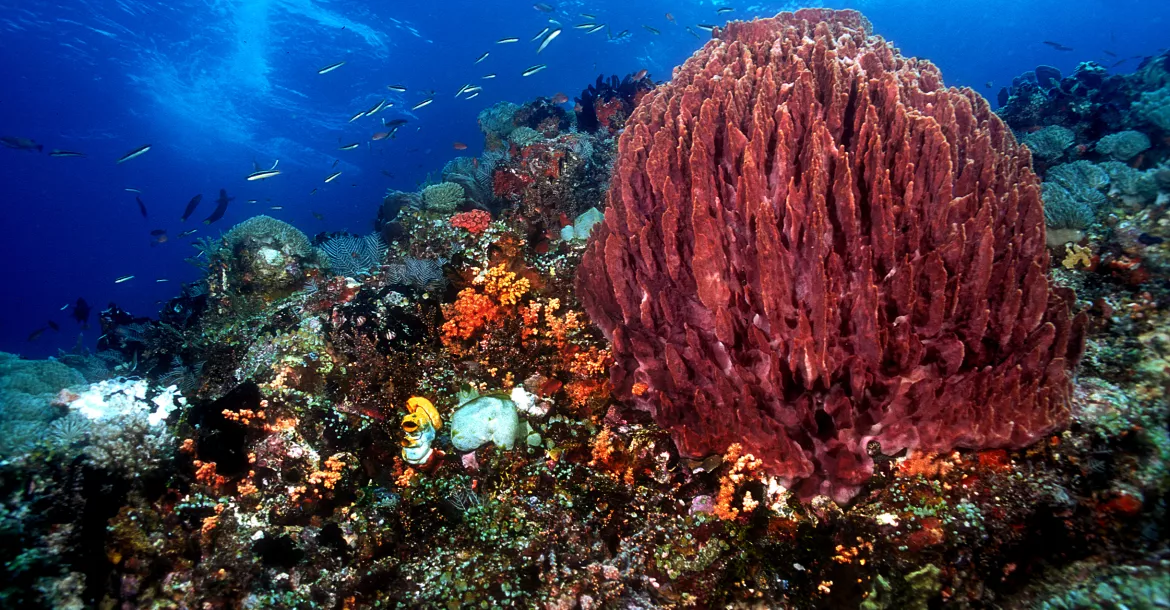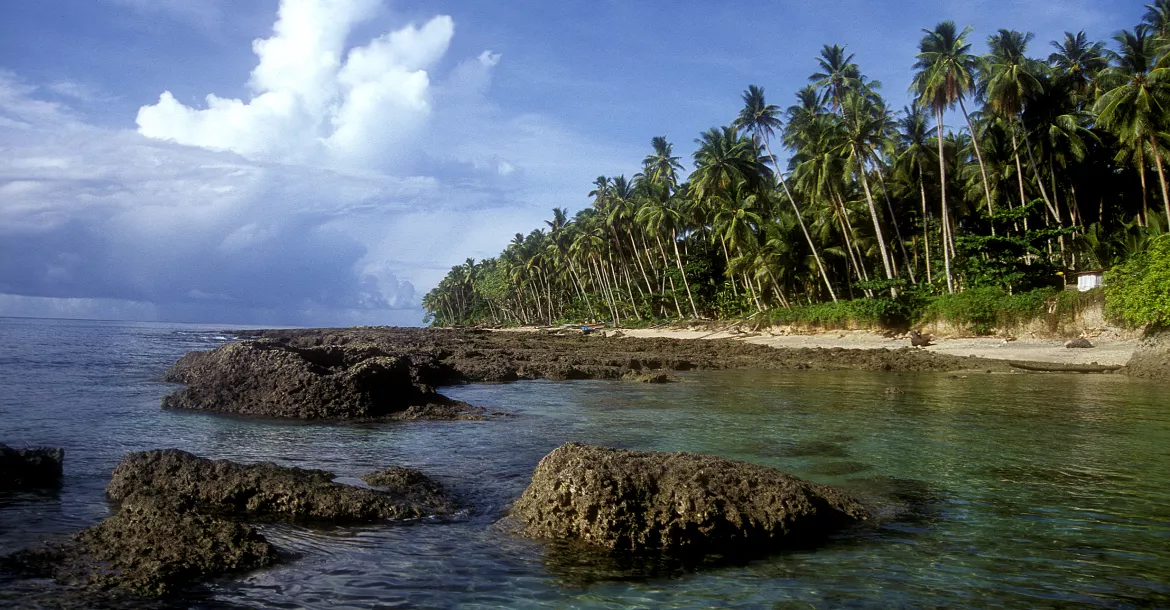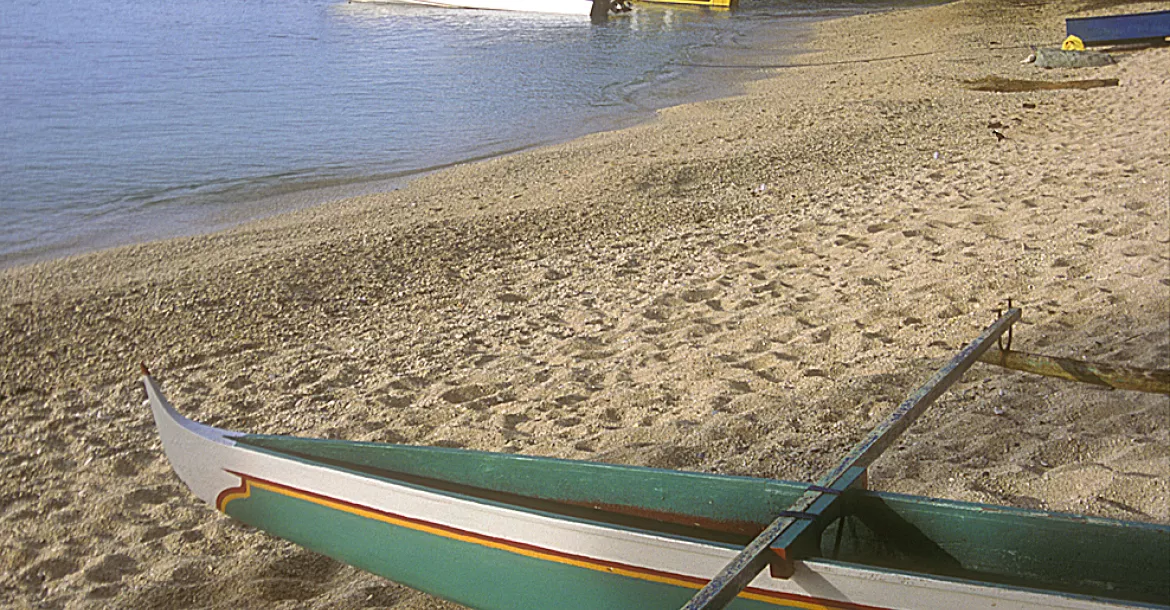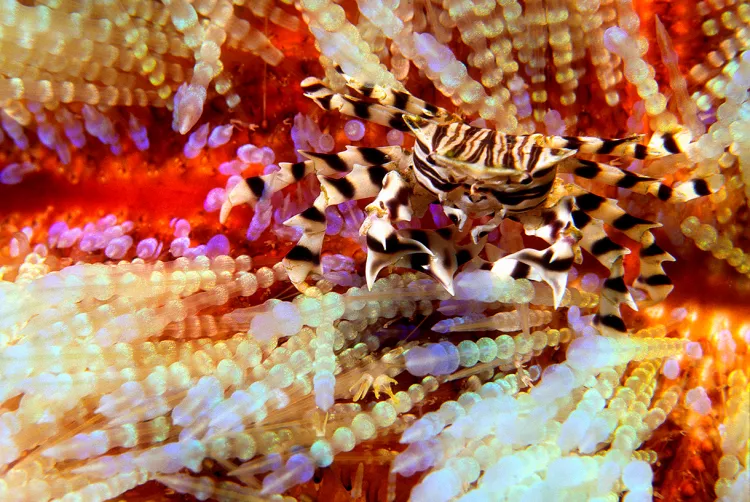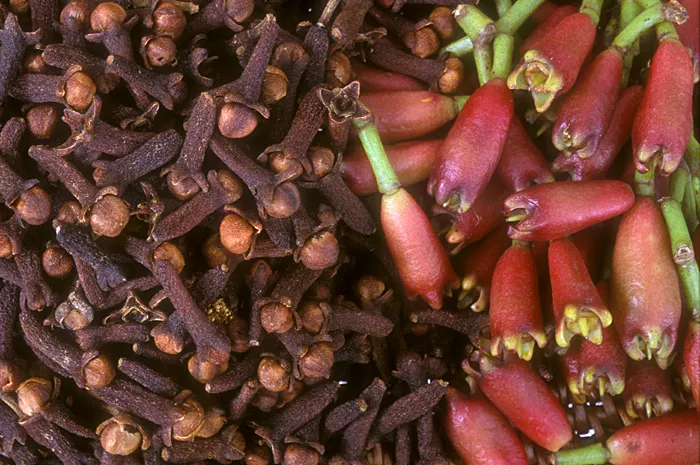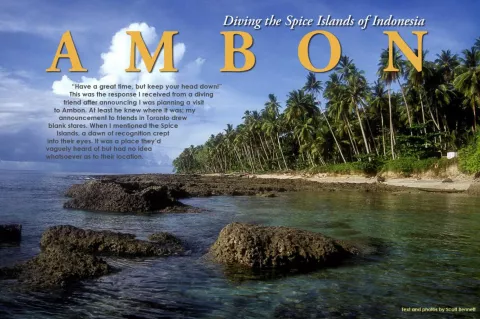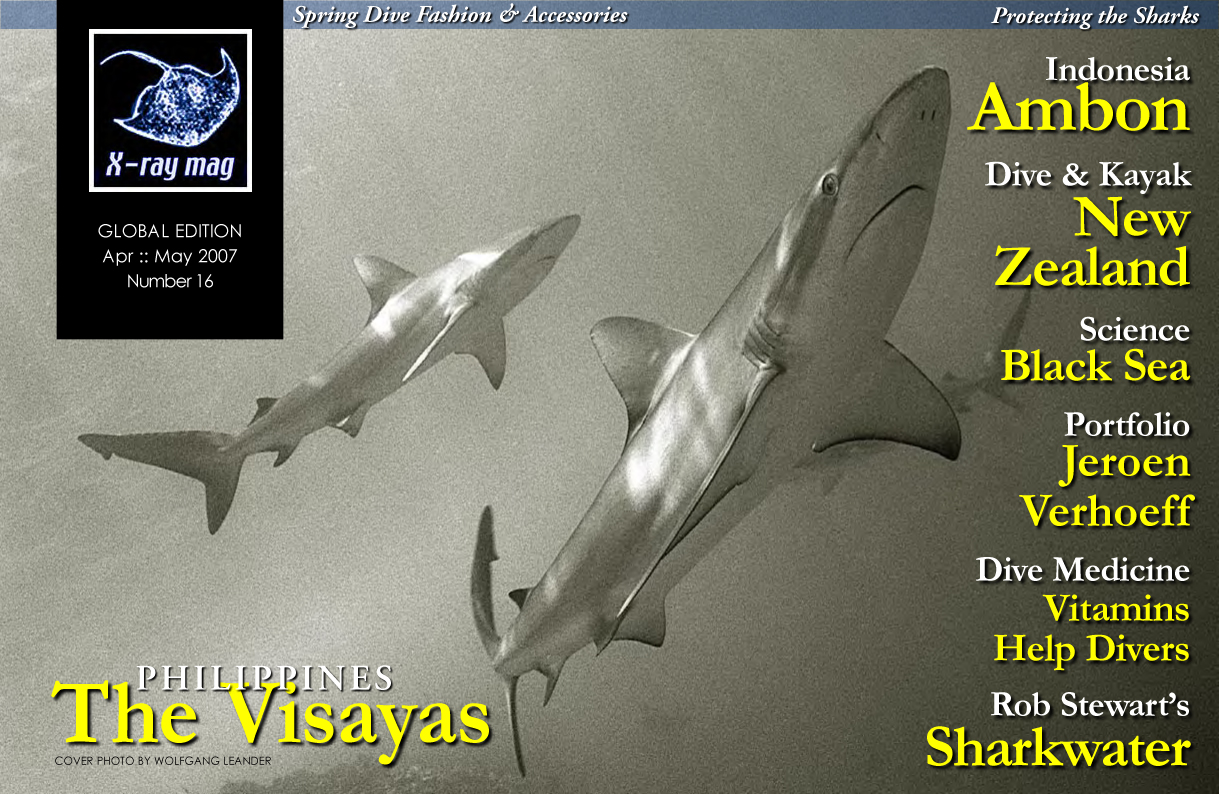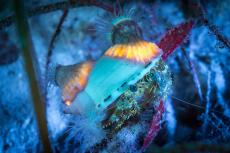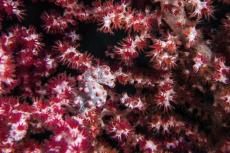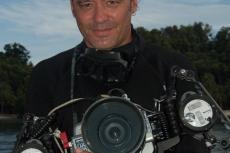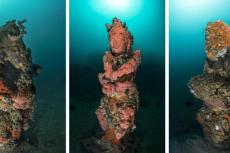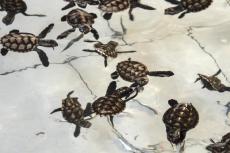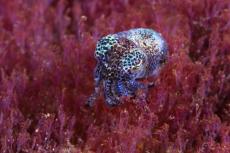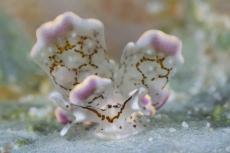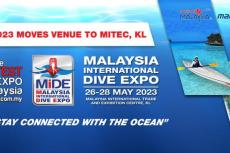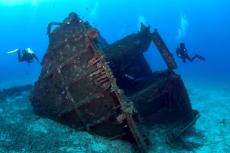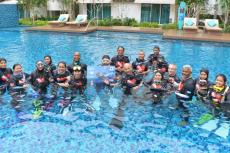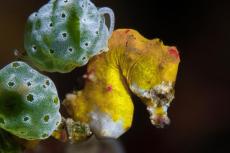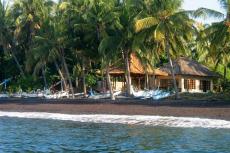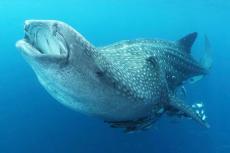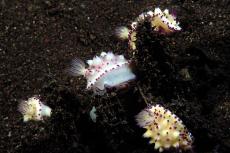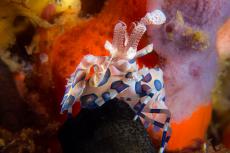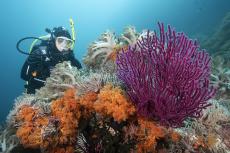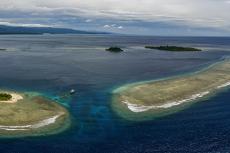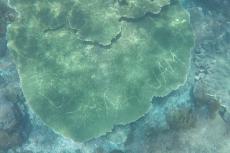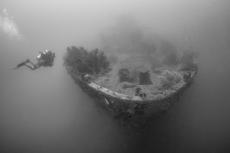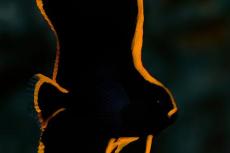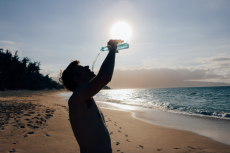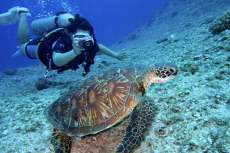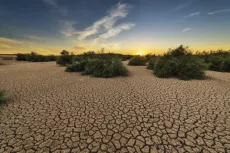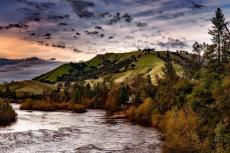“Have a great time, but keep your head down!” This was the response I received from a diving friend after announcing I was planning a visit to Ambon. At least he knew where it was; my announcement to friends in Toronto drew blank stares. When I mentioned the Spice Islands, a dawn of recognition crept into their eyes. It was a place they’d vaguely heard of but had no idea whatsoever as to their location.
Contributed by
My journey began back in June of ’05 in Singapore. While attending “Celebrate the Sea”, I met Mike Hilis and John “Buck” Randolph, the owners of Unexplored Adventures. Their company is comprised of two distinct identities, Maluku Divers and Spice Island Explorers. After regaling me with tales of pristine diving, a fascinating history and a lack of tourists, I was immediately intrigued. Inevitably, the subject of the past violence came up. In 1999, tensions between Christians and Muslims flared and the resulting violence effectively put the brakes on tourism in the region for several years.
Happily though, a peace treaty was signed in 2002 and things have been pretty quiet ever since. “There hasn’t been a westerner killed here since the Second World War!” Mike added with a grin. I was sold!
Six months later, the week before Christmas, I found myself on a packed midnight flight from Jakarta bound for Ambon. I wasn’t really sure what to expect; attempts to obtain information on the Internet were rewarded with 6-year-old stories about the unrest. Descending through the clouds my eyes were greeted with verdant islands cloaked in green. Seven flights, five stopovers and countless hours after leaving home, I touched down at Ambon’s beautiful new airport.
Normally, the transfer to the resort is made by a 15-minute boat ride, but due to rough weather the previous evening, they opted to pick me up by car instead. One hour after leaving the airport, I had finally arrived at the dive shop! Located in Latuhalat, on the southwestern corner of the island, the resort is nestled across the road from the beach. Out front, the azure waters of the Banda Sea stretched out towards the horizon. Just off the beach, expanses of jagged volcanic rock could be seen offshore during low tide, contrasting sharply with the lush forest-clad hills lining the shore.
Opening in July of 2005, Maluku Divers works closely with the local community. All 14 members of the professional, well-trained staff are from the surrounding area, including dive guides Toby and Nus.
In fact, Toby is something of a celebrity. During his working stint in Manado, he discovered a new species of pygmy seahorse that was named after him!
After a virtually sleepless night on airplanes and still burdened with jet lag, I decided to take it easy on the first day. Over breakfast, I asked Buck about some of the things that had been seen that week. Upon hearing the magic words harlequin shrimp and rhinopias, my eyes instantly lit up like a Christmas tree! I also had a chat with three guests who had arrived from Singapore a few days earlier. After hearing their enthusiastic accounts of the diving, I was beginning to wonder if the rest day was a bad idea…
Muck diving
Early the next morning, with visions of harlequin shrimps and rhinopias dancing in my head, we headed out across Ambon Bay. At first, we seemed to be headed straight for the airport. I mistakenly assumed we were on our way to pick up some more guests before the dive! We soon anchored a few metres from shore near a concrete jetty, with an array of fishing boats providing a colourful backdrop. Underwater, my eyes were greeted with a barren, rubble-strewn slope descending down to 22m. While seemingly devoid of life, there was more here than meets the eye; for this was Laha, Ambon’s premier muck-diving site.
Within moments of entering the water, the critters started coming fast and furious. The stony bottom provided the perfect habitat for snake eels. Along with the more familiar crocodile and Bonaparte’s species was another variety with a massive, grey head. Underneath the muffled roar of the fishing boats, the slope was home to a collection of seahorses in colours of yellow, orange and chocolate brown.
Care had to be taken however, as the entire area was crawling with scorpionfish; devil scorpionfish, Ambon scorpionfish and false stonefish mingled with pygmy lionfish in colour phases of red, copper and yellow. The critter parade continued; during the next 50minutes, we saw hingebeak shrimp, emperor shrimps on sea cucumbers, cowfish, morays and flying gurnards. During our safety stop, we came across an enormous cluster of urchins. Many creatures could be seen hiding among and adjacent to the protective spines, including blue-eyed cardinalfish, banded pipefish, leaf scorpionfish, dragonets, nudibranchs and a pair of giant frogfish, one green and the other black.
Back on the boat, I was grinning ear to ear! However, Toby looked rather sad, as he had searched in vain for the elusive harlequin shrimps. He came to the unfortunate conclusion that the hapless creatures had met their demise courtesy of a hungry eel. Poor Toby was so upset, he wanted to spear every eel in the vicinity and cook them all for dinner!
Laha 2
For our second dive, we motored over the other side of the jetty, but a bit further out in the bay to Laha 2. Descending to 17m, the terrain here was noticeably different. In contrast to Laha 1, rocky outcrops accented with coral growth were dispersed across the sandy slope. While the elusive rhinopias didn’t make an appearance, there were plenty of other fascinating subjects on hand. Jawfish were everywhere; their dark blue faces, punctuated with gold eyebrows, peered out at us from their protective burrows. Toby beckoned me over to show me an unusual fish with a red head and blue body sitting on the sand. He later told me it was a jawfish, but unlike any I’d seen before.
Subsequent visits over the next ten days revealed a mind-boggling assortment of critters, including flamboyant cuttlefish, stargazers, blennies, cockatoo waspfish and frogfish in a rainbow of colours.
At the end of my last dive at Laha, Toby brought me a real treat. Balanced precariously between two metal rods, was a jewel-like red and white fire urchin. Perched on top were four zebra crabs and a pair of Coleman shrimp! I photographed to my heart’s content until my air was nearly gone. Then, Toby gingerly picked it up and carried it back to its original position further down the slope. I could have easily spent my entire trip diving this site alone!
Pristine diving
Ambon, along with the neighbouring islands of Haruku, Saparua, and Nusa Laut, are blessed with literally hundreds of dive sites. Unlike in some other parts of Indonesia, dynamite and cyanide fishing are virtually unknown here and the reefs are healthy and thriving. A wide variety of superb locations are within a 20-minute speedboat ride from Maluku Divers. Nus Point features a slope dropping down to large bommie at 32m. An early morning dive here is good for sighting blacktip reef sharks, along with Napolean wrasse and turtles. Higher up is another bommie with luxuriant coral growth and lots of reef fish.
Nearby Mahai has a nice wall descending down to 37m. Abundant coral growth is found here, including tubastreas and some big fan corals at 24m. In the shallows, the bottom is carpeted with a luxuriant meadow of golden-hued hydroids. Look but don’t touch! Above, waves could be seen crashing along the rocky shoreline, while sunbeams added a magical touch.
Without a doubt, one of Ambon’s ...
(...)
Published in
-
X-Ray Mag #16
- Läs mer om X-Ray Mag #16
- Log in to post comments

